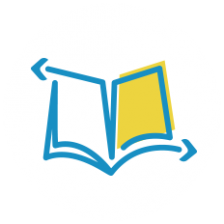Definition
According to the Individuals with Disabilities Education Act’s (IDEA), multiple disabilities refers to “concomitant [simultaneous] impairments (such as intellectual disability-blindness, intellectual disability-orthopedic impairment, etc.), the combination of which causes such severe educational needs that they cannot be accommodated in a special education program solely for one of the impairments. The term does not include deaf-blindness.”
In other words, a student whose special needs are categorized under multiple disabilities requires coinciding adaptions for more than one disability. The exception is the combination deafness and blindness, as this pair of impairments has its own classification under IDEA.
Common Traits
Given the numerous disability category combinations possible, the designation multiple disabilities encompasses a broad range of traits. However, the National Dissemination Center for Children with Disabilities (usually referred to as NICHCY) lists several common characteristics, including hampered speech and communication skills, challenges with mobility and a need for assistance in performing everyday activities. It’s also worth noting that medical conditions such as seizures and “water on the brain” (hydrocephalus) can accompany multiple disabilities.
Educational Challenges
Without a doubt, the aforementioned traits can create numerous educational challenges. For instance, a student prone to seizures raises safety concerns inside a classroom. Other common educational challenges revolve around the following issues:
- Finding a setting suitable to the child’s intelligence level
- A child’s ability to effectively communicate with teachers, support staff and peers
- A student’s capability to function in the classroom
- Assessing and compensating for visual or hearing impairments
Tips for Teachers and Parents
Triumphing over the educational challenges associated with multiple disabilities is a complex task headed by the student’s individualized education program (IEP) team. Project IDEAL, a project of the Texas Council of Developmental Disabilities, advises, “Of course, at the center of the planning process should be the student, and the strengths and desires of the student should guide the entire process.”
Staying mindful about medical conditions can assist with classroom placement, as can being aware of a student’s intelligence level. Assistive technology (AT) and alternative communication methods, including text-to-speech technologies, hearing aids and sign language, can neutralize communication problems.
Physical therapy and occupational therapy can ease physical challenges, and in turn, they can improve a student’s ability to function inside the classroom. Assistive technology and special education aids can be helpful here as well. Meanwhile, an assigned aid can provide assistance in cases in which functioning independently is difficult or impossible.
Finally, solutions ranging from priority seating to alternative textbooks (braille, audio, etc.) to hearing aids and sign language can compensate for visual and hearing impairments. A closer look at the specific disability categories which comprise a student’s multiple disabilities can supply further suggestions for overcoming educational challenges.





